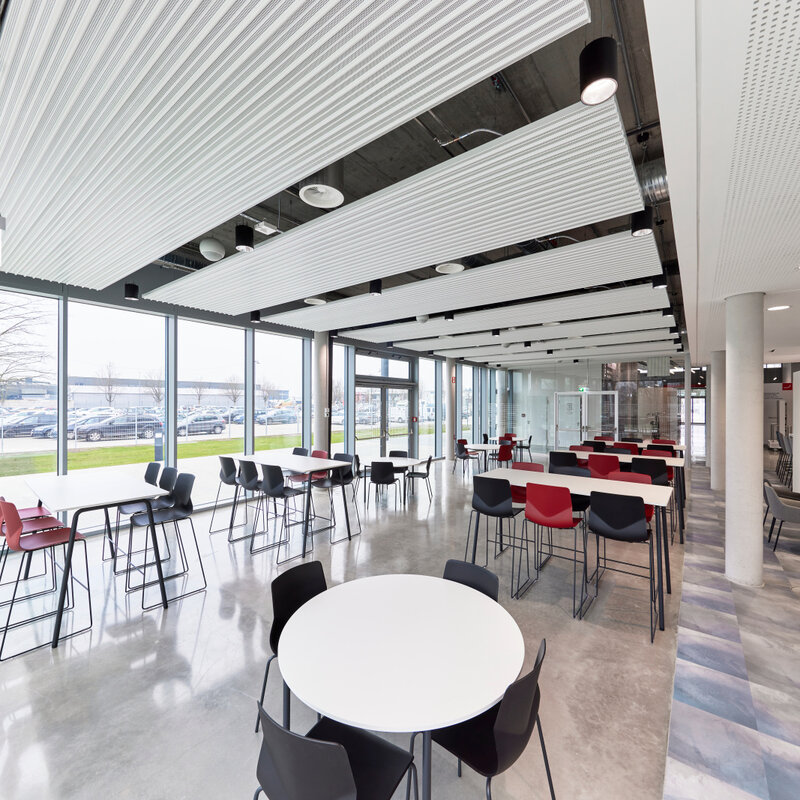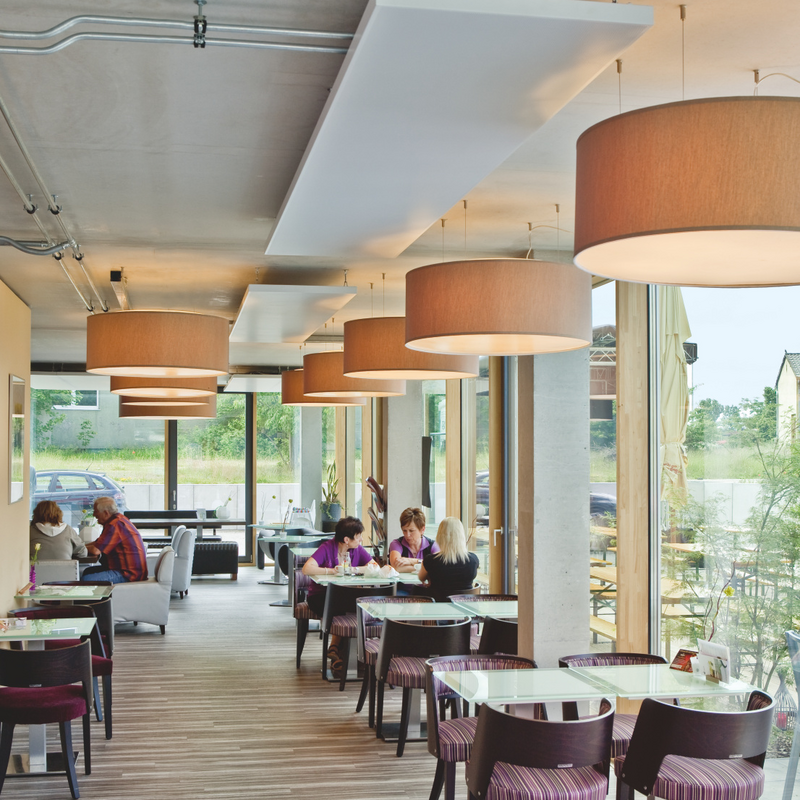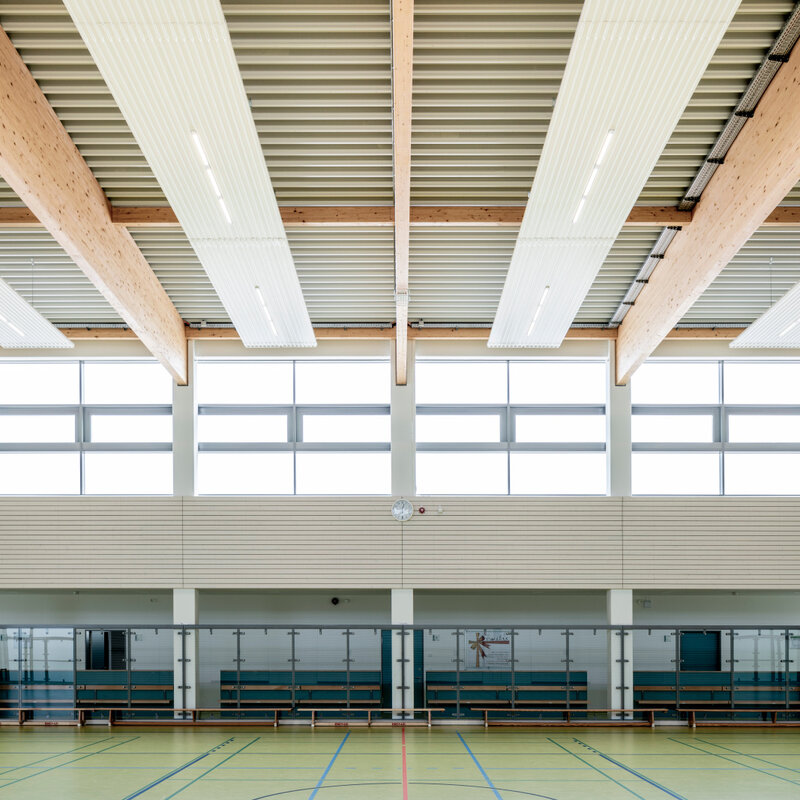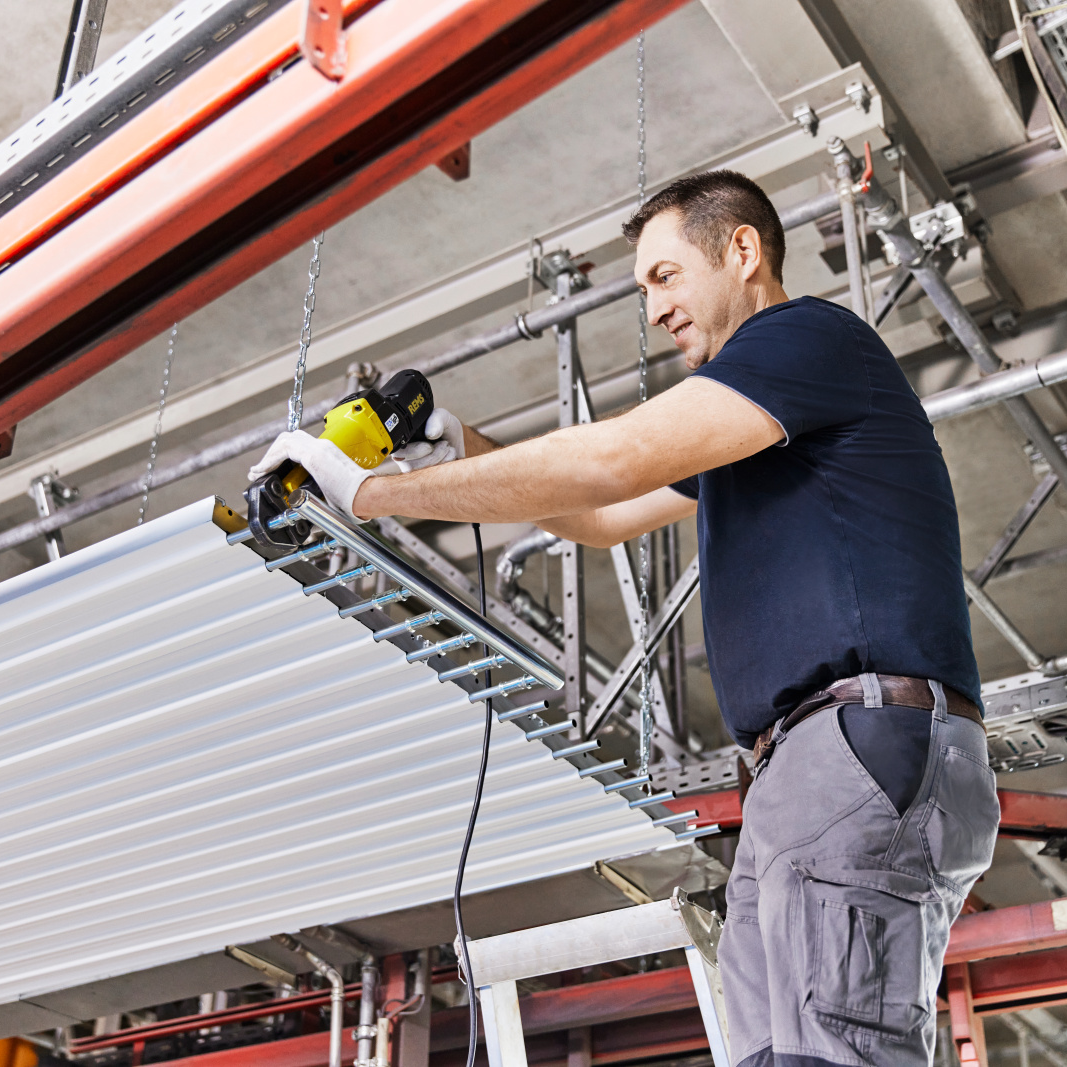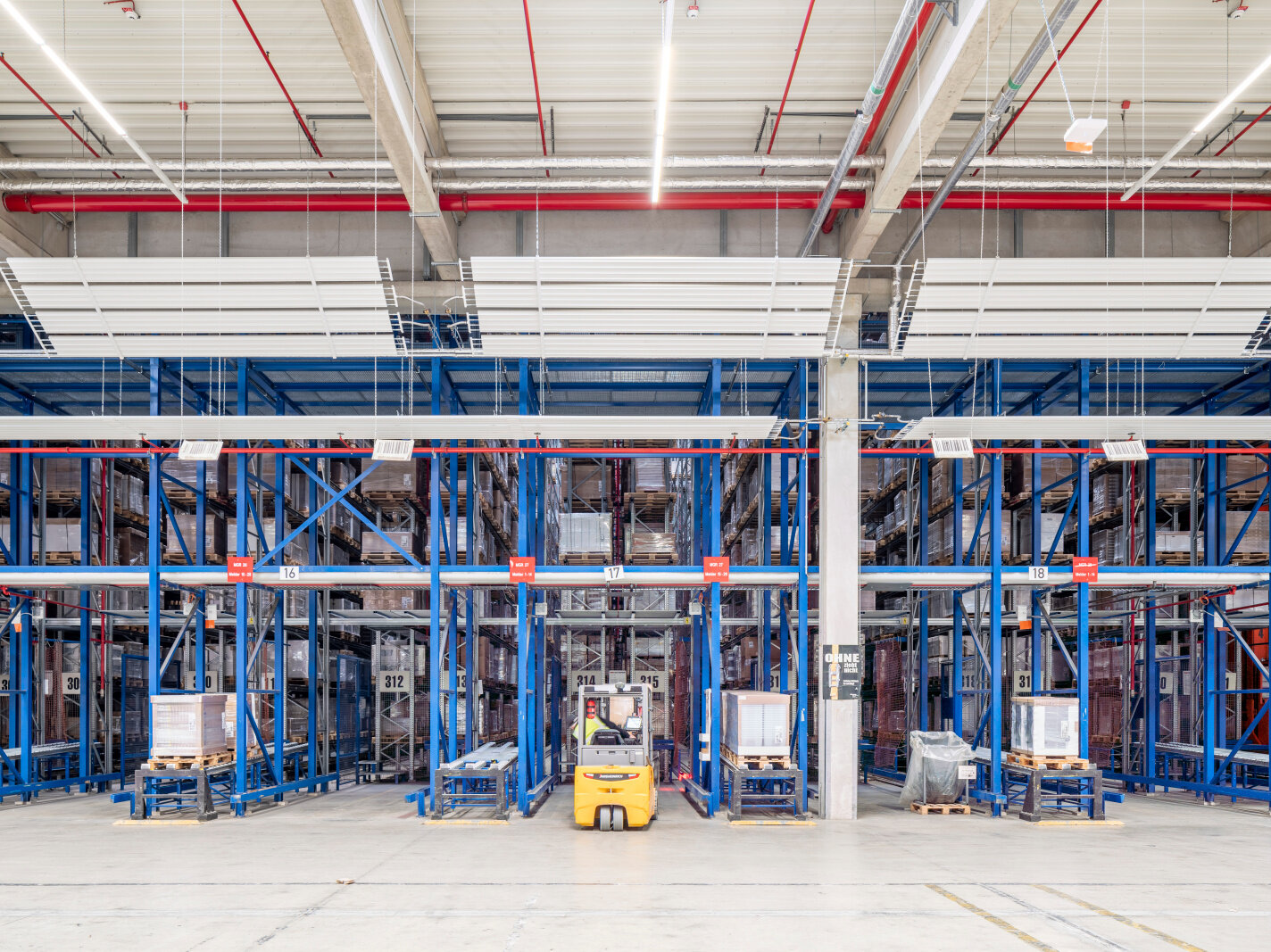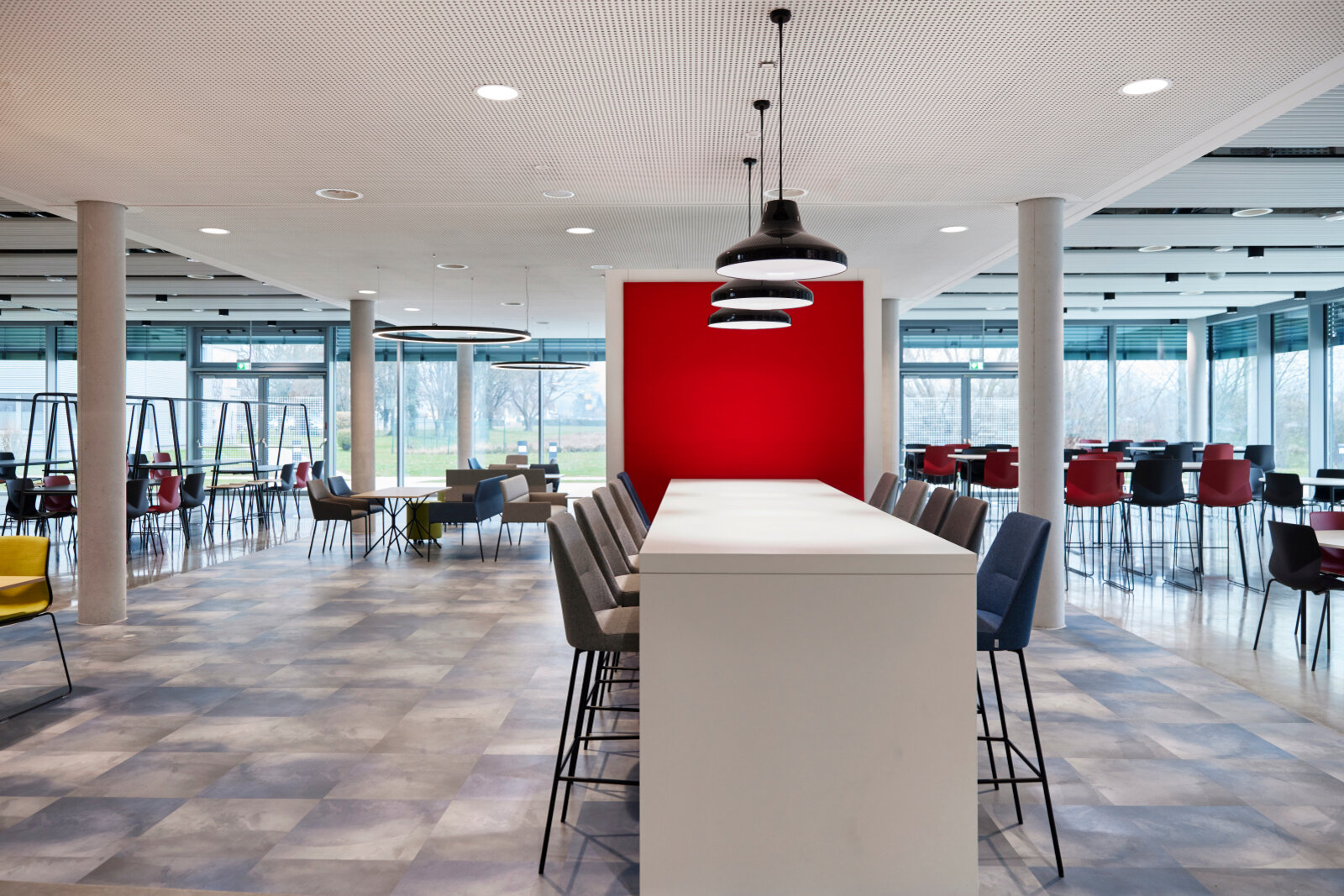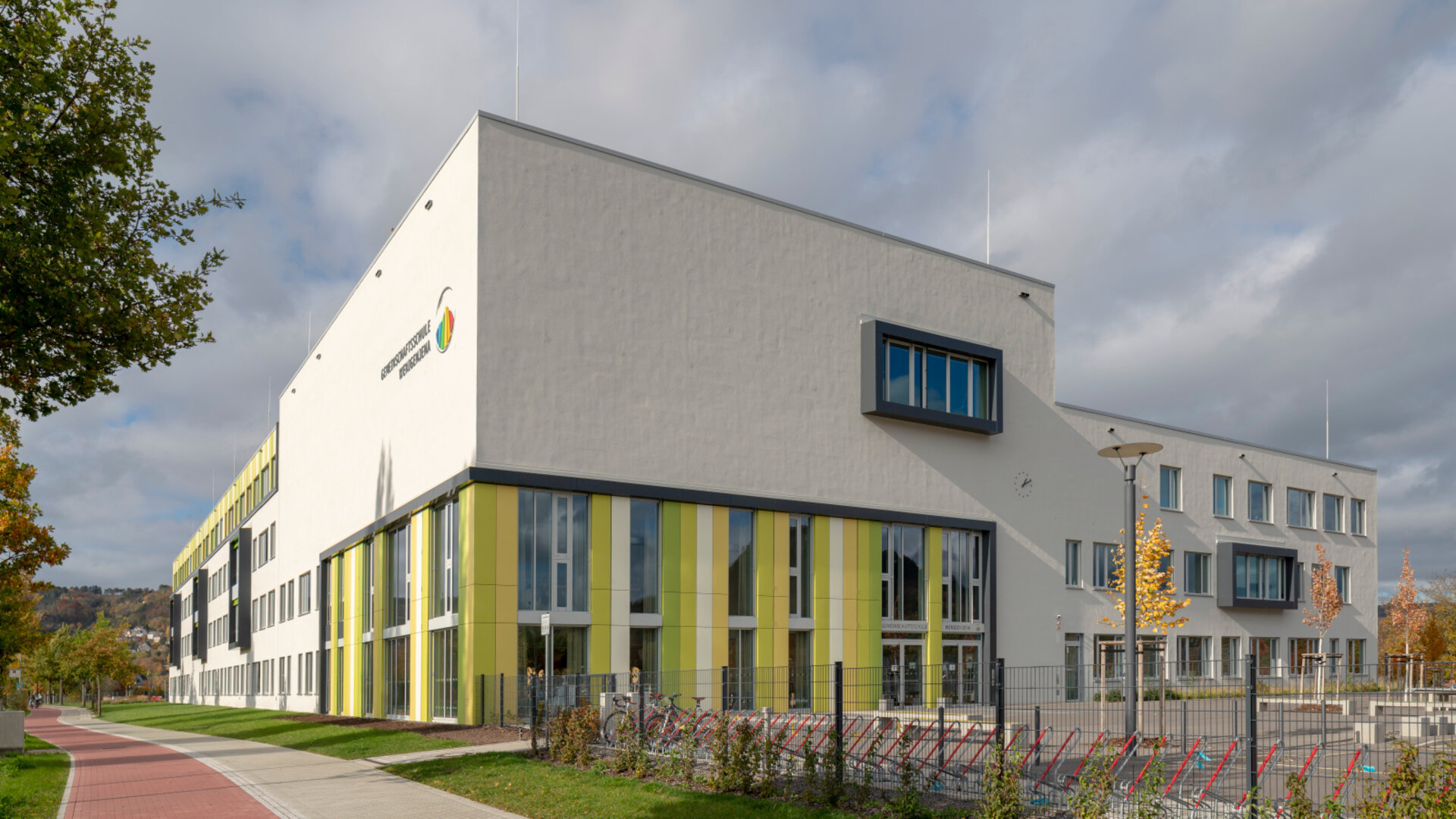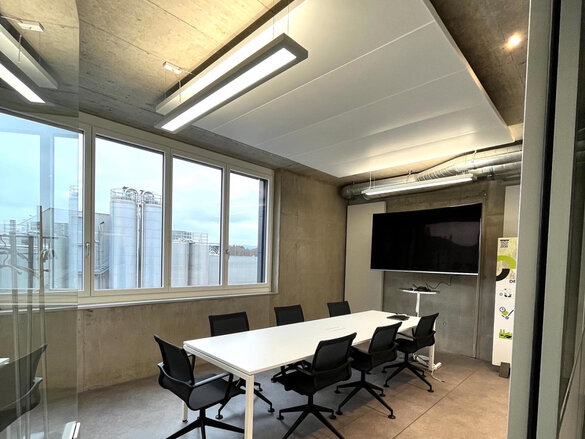Heating and Cooling from the Ceiling
Zehnder heating and cooling ceilings efficiently heat and cool large spaces such as offices or industrial and sports halls from the ceiling and ensure an unobstructed view of the architectural design. They create a pleasant indoor climate all year round with extremely energy-efficient operation.
